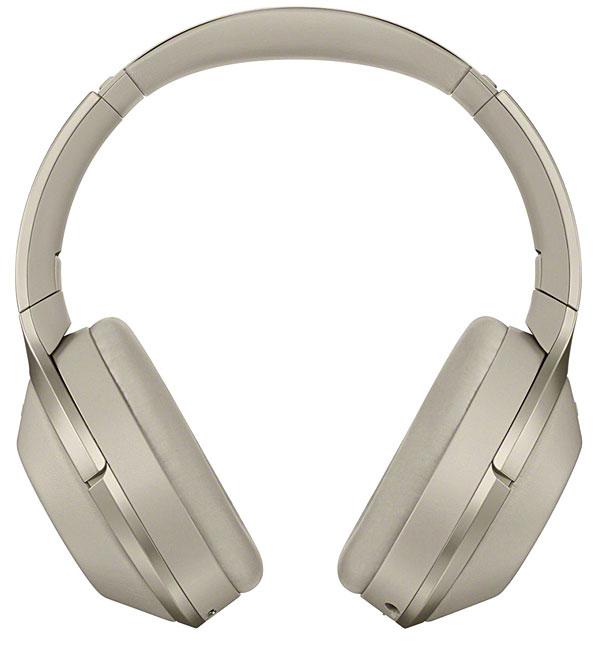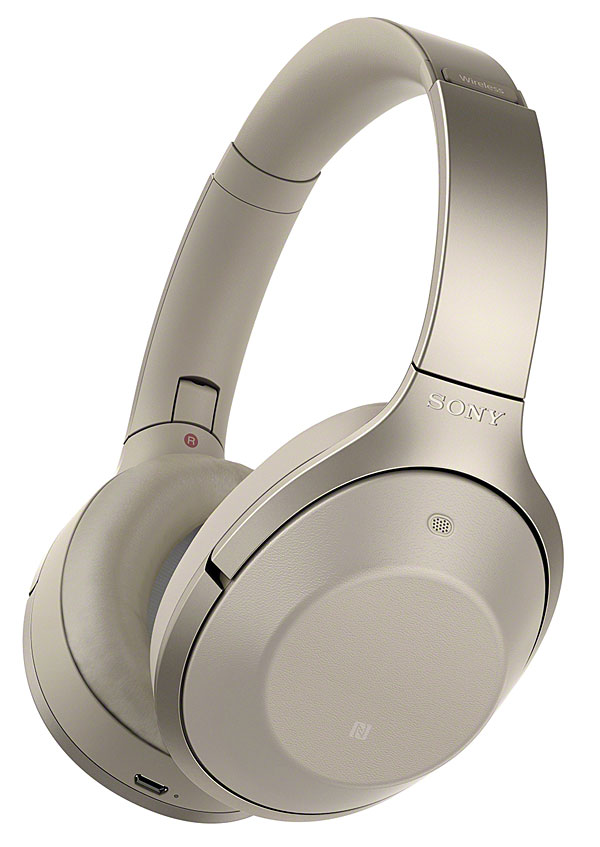Sony MDR-1000X Bluetooth Headphones

AT A GLANCE
Plus
Excellent noise cancellation
Clever environmental awareness modes
Sony’s LDAC streams hi-res audio over Bluetooth with compatible source
Minus
Sound lacks sparkle in the highs and presence in low mids
Muddy sound in passive mode
Heavy build can get
fatiguing over long periods
THE VERDICT
With some fancy new technology, the Sony MDR-100X are pretty fantastic at noise-cancelling, but the overall sound quality is disappointing.
For several years, Bose has reigned supreme in the world of active noise cancellation. Sony is hoping to change that with the MDR1000X, their most advanced active noise cancelling (ANC) headphones to date. If the quality of noise cancelling is all that matters to you, I’ll save you time skimming: The ANC on these is rather impressive. Looking to cancel frequencies above the low rumble of an airplane, say, office voices and traffic noise? The 1000X are one of your best bets. However, if you’re also concerned with audio performance and features that extend beyond the ability to block out the world around you, read on.
Sony has clearly spent a lot of time designing the MDR-1000X. Clean, simple lines wrapped in protein leather, the MDR-1000X have an understated cool vibe. The right earpad doubles as your touch control, while the left houses three physical buttons (power, ANC on/off, and ambient sound) as well as the analog ⅛-inch input. The majority of the touch controls are standard fare: Swipe up and down for volume, left and right for tracks, double tap for play and pause. Where the MDR-1000X set themselves apart is the genius conversation mode. Place your palm on the right earcup, and your music dips in volume, and the ambient noise becomes audible. Finished with your conversation? Let go of the earcup, and the previous settings return while the music volume snaps back to the original levels. It’s exceptionally helpful for those of us who fumble to find a small button when someone asks you a question.

If you prefer to have continual situational awareness, the ambient sound settings include Normal and Voice modes. Normal reproduces most frequencies so you can better hear traffic noise, while Voice enables only the higher vocal range to pass through. Both are useful but can be a bit disconcerting at first as there is an otherworldly quality to the environmental sounds being mixed into your music or podcast. Both ambient settings seem to amplify some of the higher ranges, so at one point, while working on my balcony, the bird songs around me made me feel like I was listening to one of those spa noise machines set to Forest. Which is odd, because I live smack in the middle of Los Angeles. In other words, it’s not as though closed-backed headphones suddenly become open-backed, but it can be useful in certain circumstances, especially when walking near traffic.
As mentioned earlier, the active noise cancelling on the MDR-1000X is remarkable. While they don’t do quite as well on low frequencies (like airplane noise) as the Bose QC35, the Sony seems to do a better job on mids and the vocal range than their competitors. This may partly be due to the optimizer that Sony claims analyzes your head shape and wearing style and then adjusts the sound in response. While the ANC is not completely impervious to everything around you, when music is playing at a moderate level, it’s difficult to hear anything below 350 hertz.

The flaws in the MDR-1000X, sadly, are in the sound quality. Although Sony touts the MDR-1000X as highresolution audio capable, both active and passive listening modes have issues in the voicing that I verified on two different samples. Powered up, the 1.57-inch dome drivers are tuned in such a way that I heard some sort of dip in the lower midrange that leaves the entire soundscape feeling two-dimensional, especially on resonant instruments like acoustic guitar and strings. The highs, while they avoid the piercing quality that many “hi-res” headphones have, instead lack a clarity in their attack and decay. There’s a somewhat coarse quality to the high-frequency range that especially plagues consonants and cymbals. When the ANC is activated, the lower frequencies seem to get a major boost. This means that when the ANC is off, the sound can feel top-heavy.
Unfortunately, in fully passive mode (completely powered off and using the supplied analog cable to connect to the source), the sound was abysmal; muddy and muffled with a thudding bass that left the overall profile sounding heavily veiled. Of course, you’re not buying the MDR-1000X for primarily corded and powered-down use, so this drawback is only important if the battery dies. According to Sony, this shouldn’t happen often, as with ANC activated the MDR-1000X have a claimed max use time of 20 hours.
Overall, stumbling blocks aside, the Sony MDR-1000X fills the space between the great-sounding but less successful ANC of the Parrot Zik and the fantastic ANC but non-audiophile sound of the Bose QC35. For frequent travelers or those who work in noisy environments, the MDR1000X are an excellent option, if only for great ANC and the brilliant conversation mode.


























































